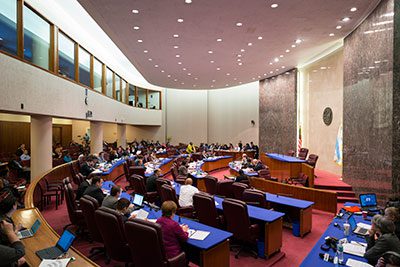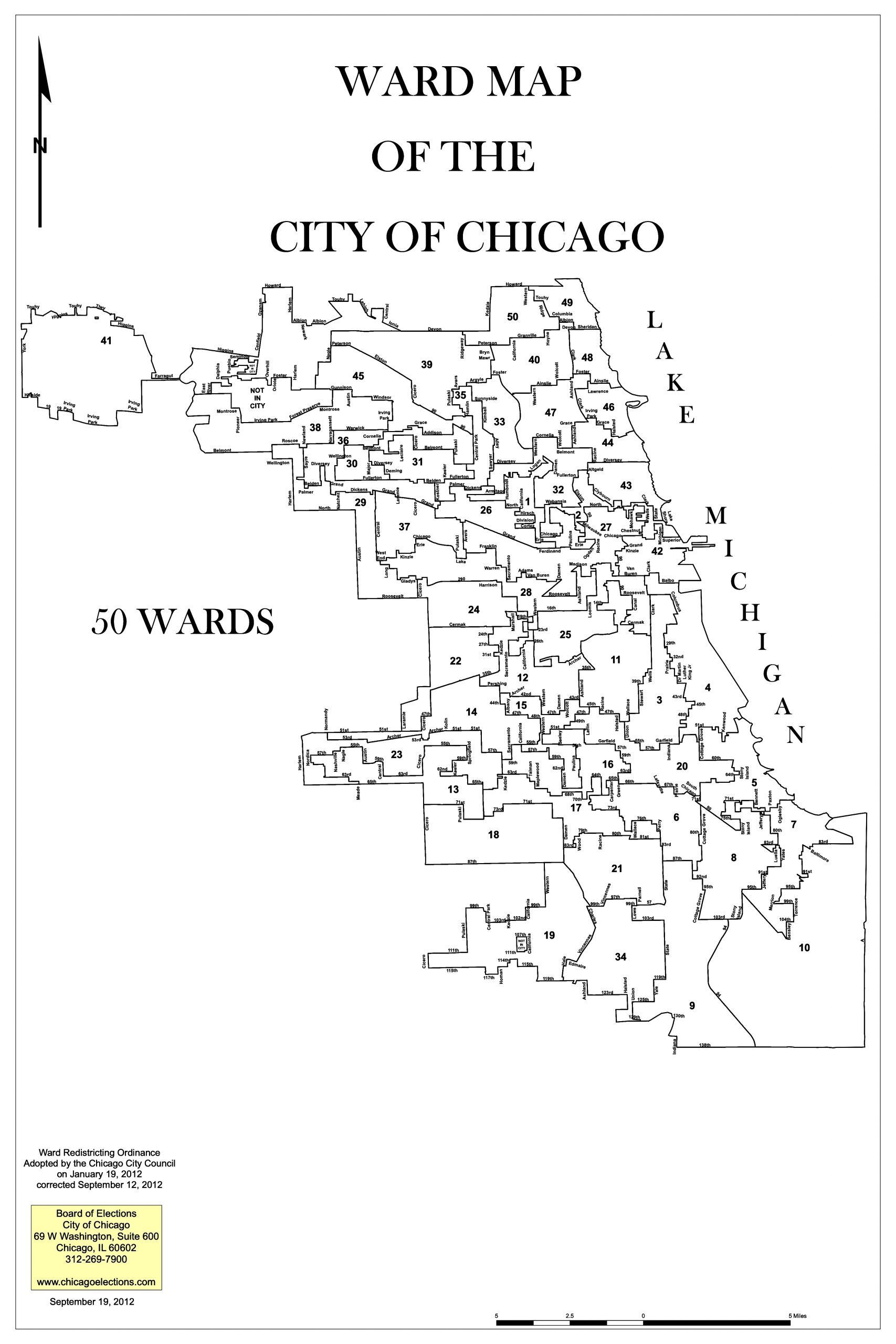Based on demographics, Chicago would lose three Black wards, while Latinos would gain two, and the Asian community would gain three wards in a remap of the city’s 50 wards, according to a new report released on Monday, July 19, in Crain’s Chicago Business.
The report by demographer Rob Paral, of the Great Cities Institute of the University of Illinois at Chicago, examined the city’s 50 council seats among the city’s primary racial groups based on their proportion of the city’s estimated population in the American Community Survey in the yet-to-be released 2020 Census. The report fuels concerns of a potential battle that may result in a loss of Black wards in favor of more Latino wards.
According to the report, there were sharp population declines in predominately Black wards, while the population grew in white wards on the North Side and Latino wards.
The report said two of the predominately Black wards that shrank dramatically are the 16th Ward in Englewood and the 20th Ward in Woodlawn. The report said Englewood’s population shrank by 17 percent while Woodlawn’s shrank by 15 percent.
In another predominately Black ward, the 34th Ward, the population shrank by 10 percent. The report said those declines reflect a broader decline in Chicago’s overall Black population, which went from 36.3 percent in 2000 to 29.6 percent in 2019.
The Crusader on July 10 published a story that showed 14 zip codes that include predominately Black neighborhoods that lost a total of 17,850 residents in one year before the pandemic in 2020. One of the zip codes, 60636, which includes Englewood, West Englewood and Chatham, had the third-highest population decline in the group. Many believe gun violence and a lack of economic opportunities are reasons why predominately Black neighborhoods are shrinking.
The report also said the predominately Black 4th Ward, which includes parts of the South Loop, parts of Bronzeville, Kenwood, Hyde Park, Woodlawn and Washington Park, grew by 12 percent.
And the 3rd Ward, which many believe is undergoing gentrification with big development projects and soaring property values, grew by nine percent. The 3rd and 4th Wards are the only predominately Black wards that grew by population, according to the report.
Five white wards on the North Side grew in population, including the 47th Ward, which elected Matt Martin as its first Black alderman in 2019.
The report does not show the percentage of gains and losses Latino wards experienced in the past several years. The city’s Latino population has risen in the last decade with 14 Latino wards. Despite population gains, Latino aldermen and leaders believe they are still under-represented at City Hall and last week pushed for more representation on the City Council.

Black alderman may struggle with hanging onto the wards that continue to shrink amid population declines. Chicago’s powerful Black electorate has weakened over the years as population losses and voter turnout declined.
A loss or losses of Black wards could diminish Black representation on the City Council.
While white wards are expected to remain intact because of population growth, there is a concern that Latinos may gain more wards at the expense of Black wards.
Alderman Gilbert Villegas (36th Ward), who is chairman of the Latino Caucus, told Crain’s that he believes the data “will reflect that there’s an opportunity to have additional representation.
The report in Crain’s also said Chicago’s growing Asian American population has enough residents to create three wards that activists are pushing for, in and around Chinatown that include the predominately Black 3rd Ward as well as the 11th and 25th Wards.
The City Council’s Black Caucus reportedly has vowed to protect the wards that they believe serve to undo years of racial segregation.
By law, Chicago must redraw the ward map based on results of the 2020 Census. Wards must have at least 54,000 residents to remain intact.
According to Crain’s Chicago Business, there were two Black wards lost when the city was remapped in 2010 after that year’s U.S. Census.
But demographics are not the only factor in remapping the city’s wards, according to Crain’s.
The publication said voting state and federal laws and neighborhood borders are among other factors that will be used to remap the wards.






